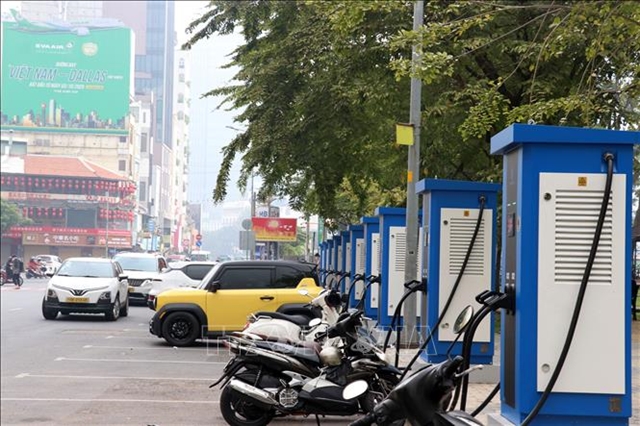 Economy
Economy

Việt Nam’s telecommunications market has reached a saturation point and will find it hard to attract new subscribers. This could result in increasingly fierce competition among telecom providers for their revenue and market share.
 |
| The local telecoms market has seen fierce competition as it gets harder to attract new subscribers. — VNS Photo Thái Hà |
HÀ NỘI — Việt Nam’s telecommunications market has reached a saturation point and will find it hard to attract new subscribers. This could result in increasingly fierce competition among telecom providers for their revenue and market share.
Nguyễn Thành Hưng, deputy minister of Information and Communications (MIC) told an international conference on tariffs and competition management, held in Hà Nội on Monday, that competition has been mostly seen in terms of prices and promotional programmes. In addition, local telecom providers increasingly face competition from social networks.
“The country’s telecoms market has developed broadly and rapidly over the last decade. The market now has 70 operating telecoms companies. Of which, 37 firms were granted licences to establish network infrastructure while the remainder provide telecommunications services,” Hưng said.
By the end of June 2017, subscriber density reached 124 subscribers per 100 people, that of mobile broadband was 50 subscribers per 100 people and fixed broadband was 11 subscribers per 100 households.
Over the past 10 years, telecom services have improved. The revenue of local telecom businesses has seen stable growth thanks to an increasing number of new subscribers despite continuously decreasing tariffs.
The total revenue in the country’s telecom sector in 2016 rose 7.5 per cent over the previous year.
“However if competition through reducing tariffs and promotions continues in the telecoms sector, the market could collapse, which would have a big impact on the operations of other economic and social industries,” he said, adding that telecoms companies should change to better meet customers’ diversified demands.
He said the ministry has always supported firms in their production, trade and the creation of applications and advanced technologies for the sector’s development and the economy as a whole.
Ashish Narayan, the International Telecommunication Union (ITU) in Asia – Pacific region’s representative said the competition among telecoms companies has no longer issues over tariffs but others such as transmission lines and creativity of services to attract customers.
He added that experiences from Europe and South Korea have been applied for better competition.
The State management agencies should adjust regulations and management mechanisms to facilitate the development of telecoms businesses and the market.
Cory Brader Leuchten from the US Department of Justice said in terms of competition, the anti-monopoly factor should be given top priority to create healthy development for the market and ensure benefits to customers.
In the US, laws on competitions and monopolies have followed trends in the sector, being updated with new articles to follow rapid developments in the telecoms market. — VNS




